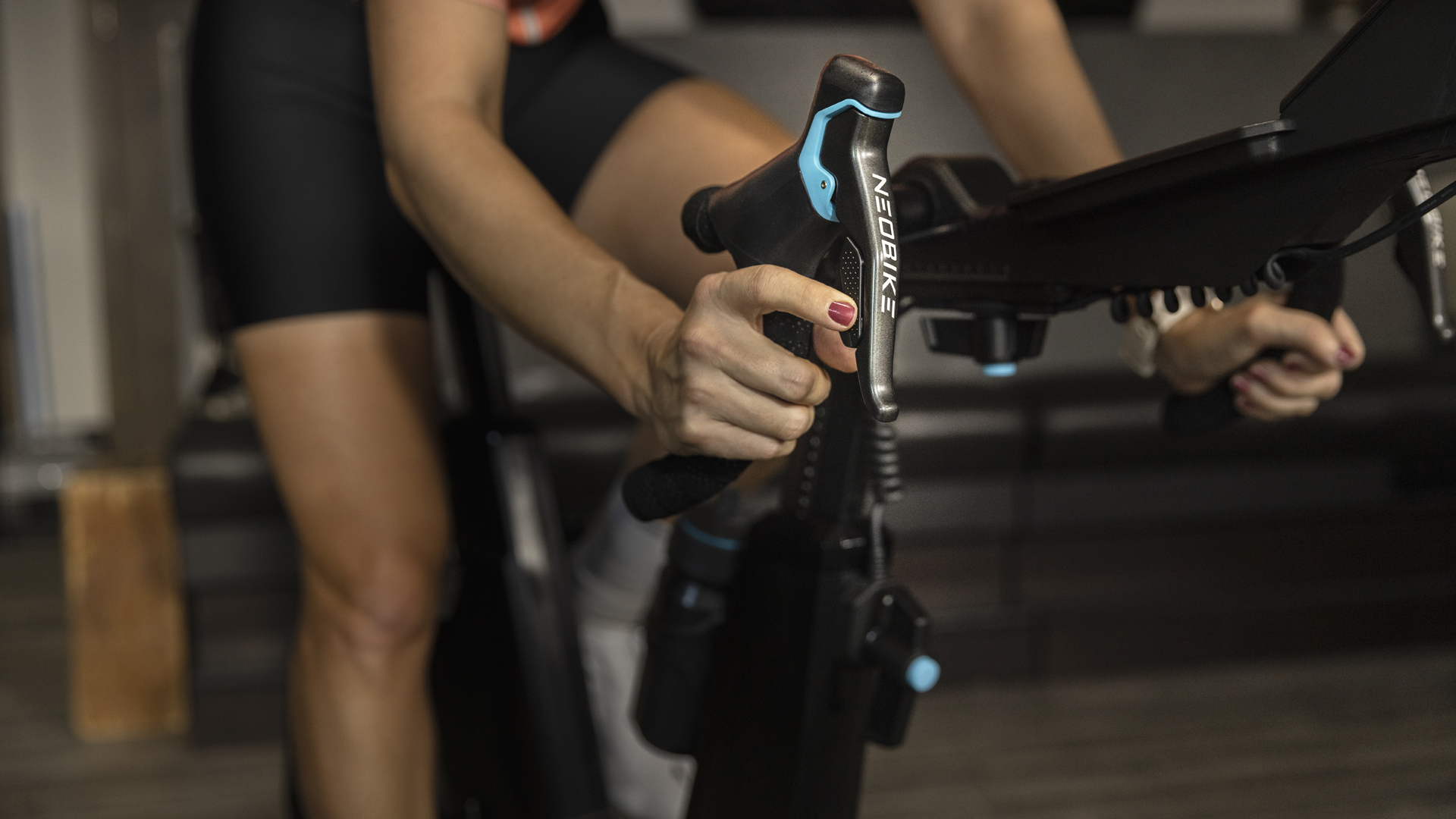

The best exercise bikes will always remain one of the most popular pieces of home gym equipment. Not only do they strengthen your cardiovascular system, but your lower body muscles too, all whilst being gentle on the joints (particularly the knees). A bonus is that they’re significantly smaller than the best treadmills and best rowing machines, so you can save yourself quite a bit of space.
Choosing an exercise bike can still be tricky though, as there are more models than ever before on the market. So, during testing, we paid close attention to each model's user experience, resistance, comfort, user experience (especially for connected bikes), price, and size. After all, if it doesn't motivate you to pedal, it'll most likely become abandoned in the corner.
Below are the exercise bikes that we thought performed the best when we took them for a ride, followed by our in-depth reviews. Whether you’re looking for something compact or you're after the best bike on the market, you'll find an exercise bike below to suit your needs and budget.
Tight on space? Check out these best folding exercise bikes instead. The difference between an exercise bike and a folding exercise bike is that the latter is far more compact as it folds down. But, just be aware, that it won’t come with all the bells and whistles that a regular exercise bike offers.
Best exercise bikes to buy right now
Best overall
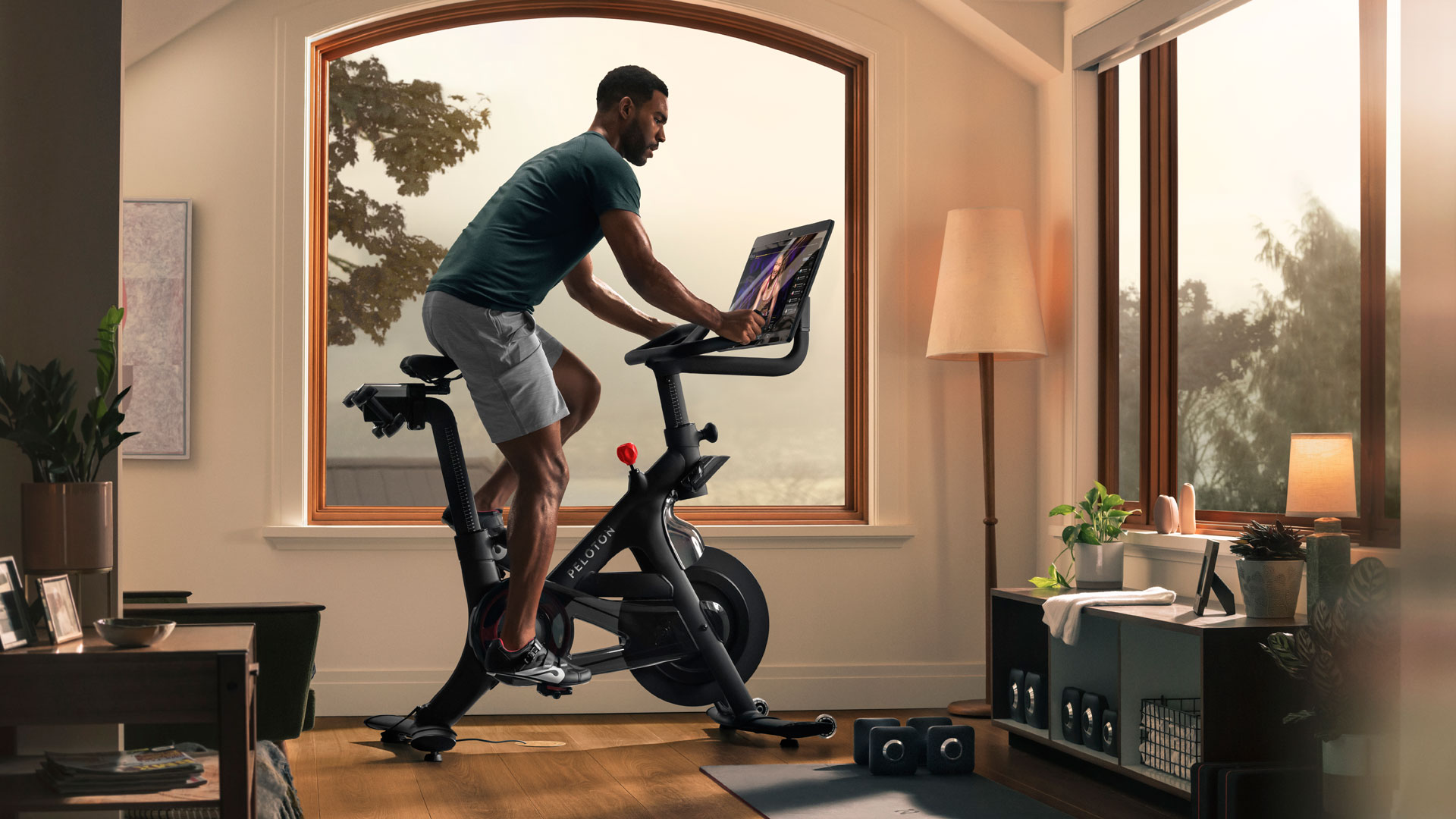

Specifications
Reasons to buy
Reasons to avoid
There’s a lot to consider when buying a Peloton bike: the initial price, the ongoing subscription costs, if you have space in your home, and so on. However, such concerns will likely melt away as soon as the Peloton Bike+ lands on your doorstep (and is subsequently carried over the threshold by the delivery guys, of course). Even we, who only had the bike on loan, were blown away by how good it felt to have the Bike+ in our homes.
Thanks to its robust construction, beautiful design with attention to detail, ease of use and comfort, we dare anyone not to become instantly obsessed with the Peloton Bike+. The premium experience it delivers is magical, and as a result, we’ve used it almost daily over the past few months. We can’t get enough.
Read our full Peloton Bike+ review.
Best Peloton alternative
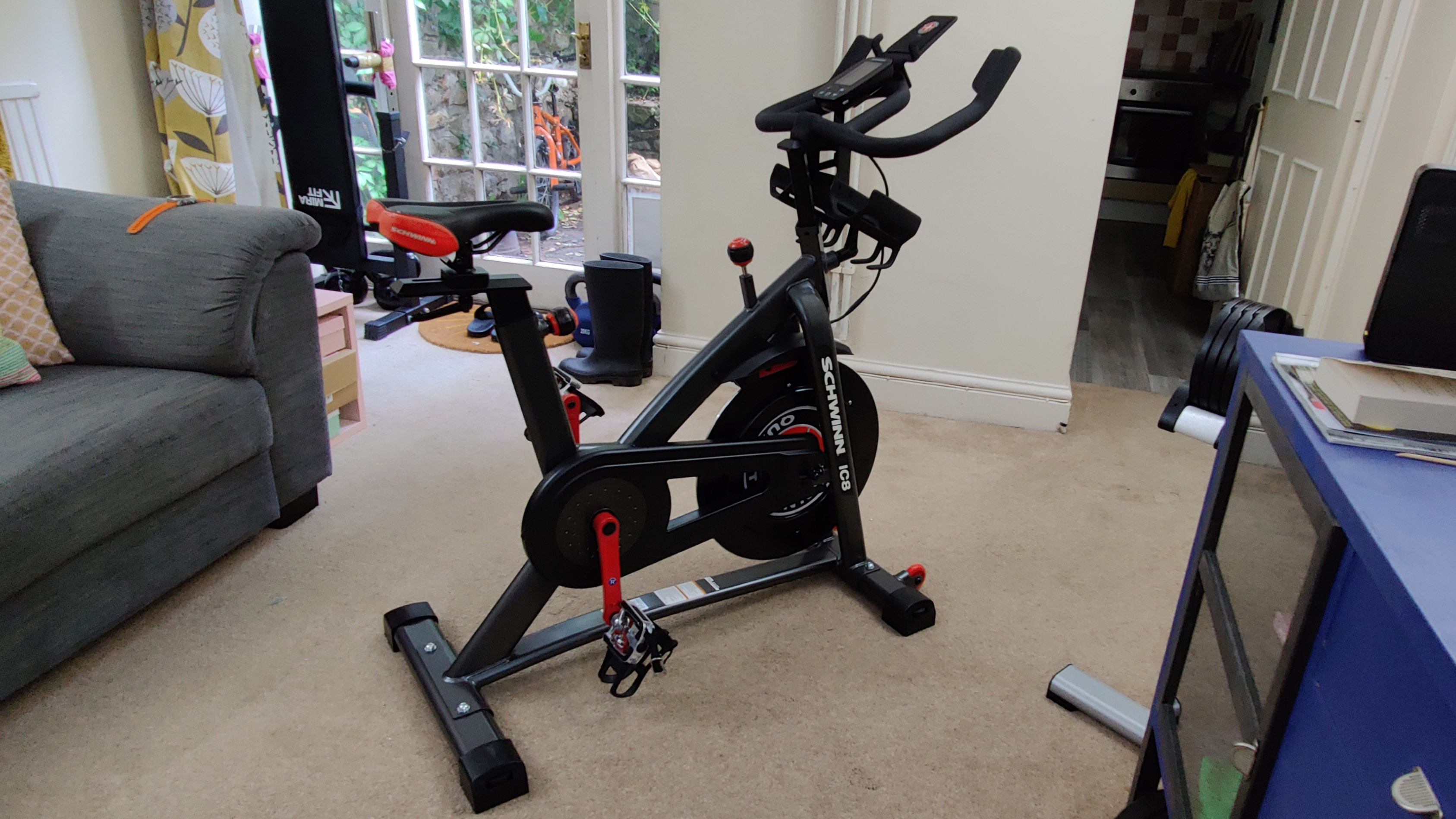

Specifications
Reasons to buy
Reasons to avoid
For the price, the Schwinn IC8 is a stationary bike option not to be ignored. We loved the solid construction and the bike's weight – we felt it would last many years of sweaty abuse. As a connected fitness tool, the Schwinn IC8 falls some way behind the Peloton Bike listed above, which is not only more technologically advanced (you get a massive screen) but is also an ergonomically excellent piece of design.
The Schwinn IC8 is an excellent Peloton alternative (rather than a hardcore road cycling training tool). If Schwinn can iron out its massively inflated power/output stats to appease the Zwift/TrainerRoad users, it will be a mighty fine all-rounder worthy of five stars.
Read our full Schwinn IC8 review.
Best budget bike
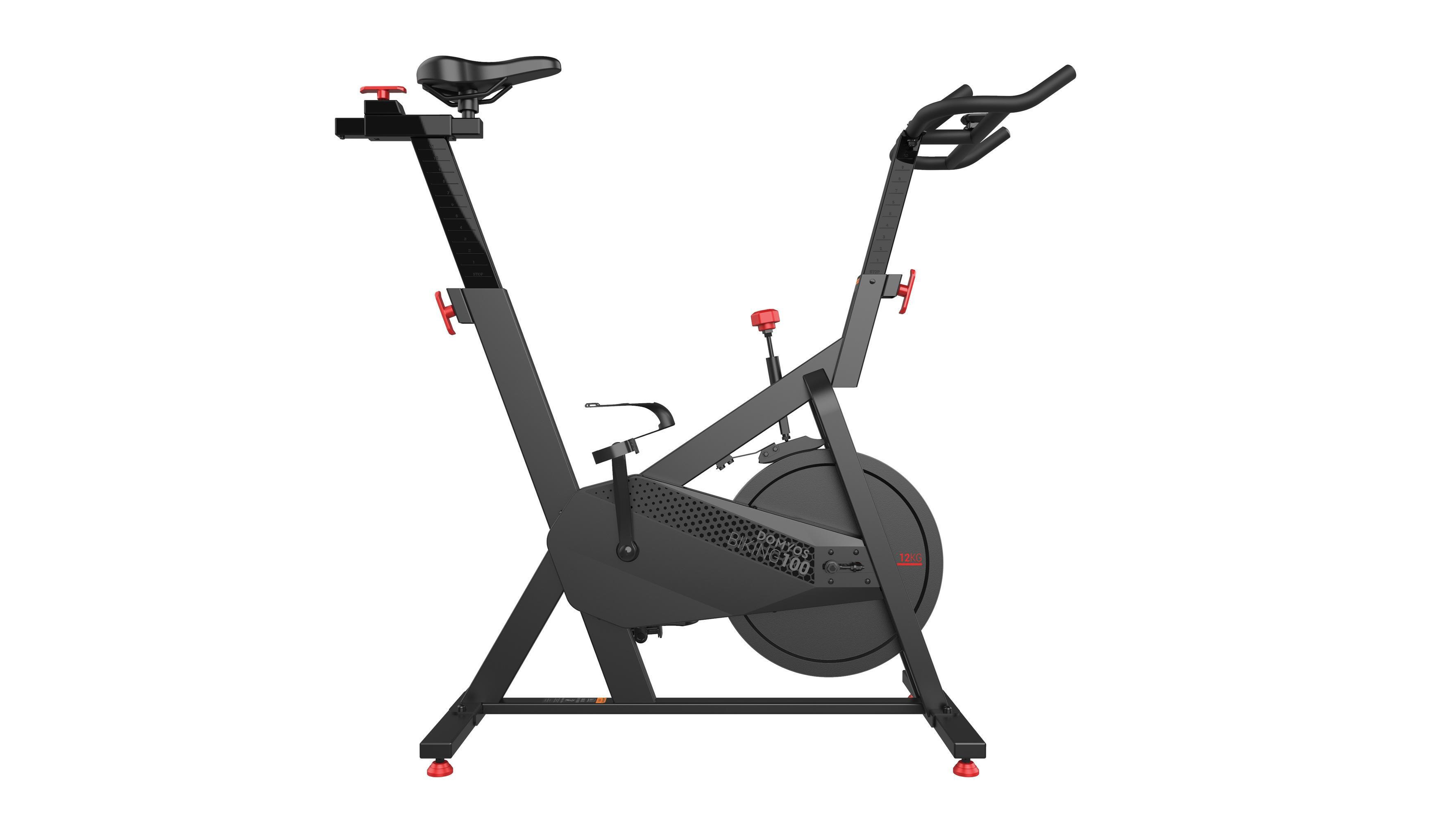

3. Domyos Basic Exercise Bike 100
Specifications
Reasons to buy
Reasons to avoid
What can we say? The Domyos Basic Exercise Bike 100 is the ideal choice for people who want to get fit with indoor cycling but aren't planning on spending loads of money on a Wattbike. And although the Wattbike is worth every penny, if you just want to pedal around at home a few times a week, the Domyos Basic Exercise Bike 100 will do just fine.
This indoor cycle is designed for occasional to regular use: the Bike 100 has been tested for average use of five hours a week, which is fair play as you really shouldn't expect a stationary bike for this price to withstand hours of gruelling spinning workouts every day.
That said, the Bike 100 is a reasonably stable bike thanks to its steel frame and stabilising pads for uneven floors. The 12 kg flywheel is plenty heavy enough for lighter workouts, and the leather brake pad will ensure that the flywheel won't make screeching noises when it's being stopped. The seat is adjustable in height and depth, and the handlebar is also height adjustable.
Best mid-range
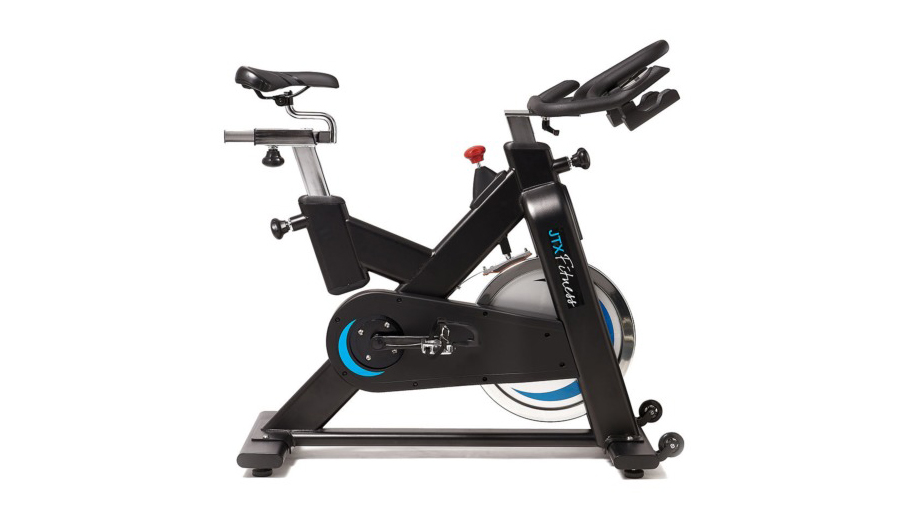

4. JTX Cyclo Studio Bike
Specifications
Reasons to buy
Reasons to avoid
Enjoying virtual spin classes at home has never been so popular as it is now. Many people don't know that you don't necessarily have to buy a Peloton/Echelon bike to enjoy virtual classes. Instead of investing thousands of pounds/dollars into the latest-and-greatest spin bikes, you can get JTX Cyclo Studio Bike and recreate an almost identical experience for way less.
The JTX Cyclo Studio Bike has a hefty 25-kilo flywheel and an 'infinity' resistance dial, similar to those found on bikes manufactured by the brands mentioned above. To make suffering on the bike more comfortable, both the handlebar and the seat adjust vertically and horizontally using the quick-release handles. The JTX Cyclo Studio features the JTX SPD Clip-In Pedals, which can be used with – you guessed it – SPD shoes or, by flipping it over, regular trainers.
Best smart bike


Specifications
Reasons to buy
Reasons to avoid
The Wattbike Atom is a rather more serious bit of kit; the Terminator of the spin bike world. Wattbike has long been the master of creating professional-grade indoor cycling equipment that offers more feedback than a heavy metal concert in a wardrobe, but now it has turned its attention to the private home market.
The Atom's lightweight steel construction makes it easy to move around, while the compact frame ensures it doesn't take up too much space at home. It still feels more like a real, high-performance road bike than most of its rivals. It's got a thin, lightweight racing saddle, authentic drop bars with rubber gear cowling and 'out-front' time trial bar extensions.
The realism doesn't stop there because when plugged in and synced up to a smart device, it shows off its fancy, innovative Climb Mode, which automatically adjusts resistance when connected to virtual training software. So when you hit a hill during a Zwift session, the resistance ramps up to match. Wattbike's own detailed app measures 37 different riding metrics, which can be displayed on a smartphone or tablet (there's a neat holder for that) while training.
Read our full Wattbike Atom review.
Best realistic ride

Specifications
Reasons to buy
Reasons to avoid
The Wahoo Kickr Bike (V1) review is a superb dedicated indoor cycling trainer; however, it's not quite perfect. It might read like it should be, as we'd assumed it to be way better than the Garmin Tacx Neo Bike, by comparison, thanks to Wahoo's rise/fall hydraulic system, but in reality, we've missed the built-in fan cooling and phone holder of the Tacx setup. Latency, too, is a bother – but that Kickr Bike V2 ought to fix that issue if you can afford the extra (I've not tested it, as I don't have one to compare).
We haven't missed the Tacx's restrictive gearsets or poor shifter positions, though, which is where the Kickr Bike really comes into its own: in feeling closer to a road bike proper than the competition. The lack of side-to-side movement means it's not wholly realistic, of course, but it's a step above its peers – and that's massively appealing. Overall, as dedicated indoor trainers go, the Wahoo Kickr Bike (V1) makes for a sensational ride.
Read our full Wahoo Kickr Bike (V1) review.


Second best Peloton alternative
Specifications
Reasons to buy
Reasons to avoid
The Echelon Connect EX-3 is a decent indoor bike, and it offers a wide variety of on-demand and live spin classes. The magnetic resistance provides a near-silent riding experience, and thanks to the customisation options, most people will find a way to sit on the Echelon Connect EX-3 however they want.
Unfortunately, the bike doesn't come with a built-in screen that chips away from an otherwise superb indoor cycling experience. A class viewed on a comparatively small, 10" tablet will not be the same as it is on a 22" Peloton bike screen. You can use your Echelon Fit web login on any smart TV and watch Echelon classes on a big screen.
Considering the sturdiness of the Echelon Connect EX-3, the available classes and the affordable price point, I would recommend the bike to people who are happy to use their own gadgets to view the Echelon App. As they say, a penny saved is a penny earned, and you will be able to save a pretty penny by getting the Echelon Connect EX-3 bike.
Read our full Echelon Connect EX-3 review.
Best for sedentary lifestyle


8. CAROL Bike
Our expert review:
Specifications
Reasons to buy
Reasons to avoid
Rather than going down the currently fashionable route of virtual spin classes, CAROL has a very different ace up its sleeve. It promises to get you fit in just 26 minutes per week via a programme that pushes the intensity levels up to the absolute maximum. You exercise for 8 minutes per session, of which the vast. The majority is gently warming up and rather exhaustedly warming down. In between are two sprints of 20 seconds each.
This may not sound like much, but as soon as you start to sprint, CAROL pushes the resistance up to what it calculates is the absolute maximum that you can stand. Believe me: those 40 seconds hurt. However, a lot of research suggests very good cardiovascular health results from this brutal workout.
You can also do more standard, longer workouts on CAROL, but it's this super-intense HIIT workout that you're paying for, and CAROL is not cheap. There are 'free ride' workouts, more traditional HIIT-style fat burners and some useful fitness tests to map your progress. The free ride mode can also be used in conjunction with guided cycle workouts from the likes of Apple Fitness+ and Peloton if you have the relevant subscriptions. It's a very impressive bit of kit, although, by definition, not for everyone.
Read more about the CAROL Bike in our hands-on review.


Best for beginners
Specifications
Reasons to buy
Reasons to avoid
With a stylish design and good, solid construction, the Apex Bike is a brilliant bit of kit for the price, complemented by some excellent virtual classes and top-notch instructors.
Although there's not a screen, there is a slot for your phone or tablet, and you can connect either of these to Apex Rides app. The app gives you access to plenty of virtual spin classes, which up to six people in your house can also access. This will cost you an additional £29.99 per month, although in the grand scheme of things we don't think this is too bad. Metrics, such as calories burned, distance and RPM, are also displayed during and post-workout.
Sadly, and the only real downfall with the Apex Bike, is that the app is only compatible with iOS users, so Android users will miss out unless they're willing to fork out on an iPad or iPhone.
Read our full Apex Bike review.
How to buy the best exercise bike for you
The first thing to know about home exercise bikes is that the cheaper ones are not all that much like riding a real bike. High-end smart indoor trainers like the Wattbike Atom and Proform TdF Pro 5.0 Studio are the exception, not the rule. You may want to consider a smart (turbo) trainer if you require a more 'realistic' experience without spending a pretty penny on a high-spec smart bike.
Most modern exercise bikes use a brake-based system that sees a heavy metal flywheel turned by the pedals and chain rather than a rear wheel. Resistance is added in cheaper models by breaking this flywheel as you would on a moving vehicle. However, in recent years indoor and spin bikes have arrived that use powerful magnets to act as a brake. This does away with the need to apply physical force to the flywheel, preventing wear and tear. It also offers a more natural, realistic feel
As well as considering the cost of the bike, the main decision you will need to make is riding position, be it recumbent (more joint-friendly) or varying levels of upright. The former is great for anyone with back problems who perhaps don't want to be hunched over like Bradley Wiggins attacking a time trial, while the latter does its best to replicate a real outdoor cycling experience.
These things do command a decent amount of space at home. But even if you haven't a clue what cadence means, nor care for Lycra-clad jaunts at the weekend, one of these pedal-powered beauties could be the difference between you smashing your fitness goals or slowing sliding into couch potato land.
For those who can't make up their minds whether to get a stationary bike or a treadmill next, we compared these cardio machines here: treadmill vs exercise bike.
How we test the best exercise bikes
You might think it's not that difficult to test exercise bikes; all you have to do is jump on the saddle and pedal away.
However, when we test indoor bikes, we must test all the features the machine has and that includes meticulously going through all the programs and settings, checking different customisation options, build quality, the mechanical and digital components and more.
There are even more things to observe with bikes like the Peloton Bike+, such as the display, the library of live and on-demand classes, etc. We test these all, so we know which ones are worth the money and which aren't.
To learn more about how we test at T3, click on the link now.
FAQs
What is the best exercise bike?
This partly comes down to personal preference, but we think the best exercise bike at the moment is the Peloton Bike+. It has an ever-expanding workout library, a fabulous design, and premium construction.
However, we know this exercise doesn’t come cheap, so if you're on a tight budget, you're better off getting the Schwinn 800IC. The bike is manufactured by Bowflex's sister company, Schwinn, and it's robust, quiet, and far more affordable than the Peloton Bike+ – it's our favourite alternative.
Is an exercise bike good for weight loss?
Despite being a low-impact aerobic activity, an exercise bike can be very good for weight loss. In fact, according to Healthline it’s one of the best cardio exercises that can help you lose weight. It's also a better option for those struggling with obesity as it puts less pressure on the joints than running, especially outdoors.
Technogym advises doing three 30-minute workouts a week on your bike to get your body used to cardio workouts first. Then, after a month, you can try increasing your workout time to up the intensity. If, however, you are short on time, your best option is doing some interval training instead, as this can help burn lots of calories in a short space of time. An example of this would be cycling really hard for 30 seconds, followed by a minute of steady cycling to bring your heart rate back down, and repeating this 10 times. Need more ideas? Here's three ways you can use an exercise bike for weight loss.
However, don't forget, when it comes to weight loss, you can't rely on exercise alone and you’ll need to look at your diet. To lose weight, you’ll need to consume fewer calories than you burn in a day.
How many calories can you burn on an exercise bike?
According to Heathline you can burn more than 600 calories an hour on an exercise bike, depending on the intensity of your workout. It’s one of the best cardio exercises that can help you burn the most calories which, in turn, will help you lose weight.
Which exercise bike is best for workout?
The best exercise bikes for home workouts are studio-style indoor bikes, the ones that grant you access to live and on-demand classes and enable you to pedal hard and with varying intensity for long periods of time. Peloton spins to mind (pun very much intended) as a great example, but certain bikes from Echelon and NordicTrack can also provide a superb home workout experience. For pro-league cycling home workouts, try the Wattbike Atom or the Wahoo Kickr Bike instead.
Get all the latest news, reviews, deals and buying guides on gorgeous tech, home and active products from the T3 experts

Bryony’s T3’s official ‘gym-bunny’ and Active Staff Writer, covering all things fitness. She is a certified personal trainer and also a part-time fitness instructor. In her spare time, you will find her in her natural habitat - the gym - where her style of training is a hybrid of bodybuilding and powerlifting. Bryony loves writing about accessible workouts, nutrition and testing innovative fitness products that help you reach your fitness goals and take your training to the next level.
- Matt KollatSection Editor | Active
- Leon Poultney